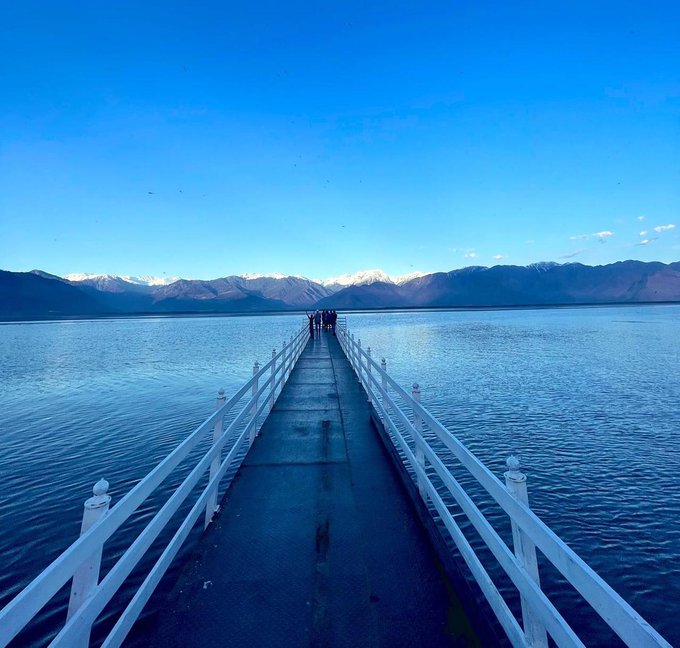
Ehsan Fazili/Srinagar
Years of dredging and de-siltation in Asia’s largest freshwater lake – Wular in north Kashmir have borne fruits with the blooming of lotus inside it. Apart from its beauty, the bloom signifies the potential harvest of Lotus, Nadroo, a local delicacy that is now being marketed abroad, contributing to an economic boom.
The Lake had stopped producing Nadroo because of the settlement of silt and soil in the lake due to floods in 1992 and 2014.
A patch of the lake near the Garoora village in Bandipore, 57 km from Srinagar, has shown a full growth of lotus flowers along the lake’s periphery. It makes the officials and local farmers optimistic about its produce.
Wular Lake, spread over an area of 200 sq km along the peripheries of Bandipore and Sopore areas, was declared a Ramsar site in 1990. Its main produce is fish, contributing 60 percent of Kashmir valley’s total production, water chestnuts (singhara) and Nadroo (lotus stem).
At least 5200 fishermen are registered with the Wular Conservation & Management Authority (WUCMA), for the lake’s conservation. An increased fish and Nadroo production has been noticed during the past few years.
“It (lotus bloom) is an indicator towards the revival of Wular Lake, though the lake's area is very vast, which needs sustained cleaning and conservation efforts", MLA Bandipore, Nizamuddin Bhat told Awaz -The Voice.

The recently developed Sunset point in Wular Lake
He added that this could be the result of the cleaning process in the small patch, which may also lead to the restoration of more areas of the huge mass of the size of the lake. “The production of Nadroo and fish can be restored to a reasonable level, which can provide sustenance to many…..the lake’s revival is absolutely a different issue”, he said.
The MLA lamented that Wular Lake has been in a “bad shape”, with no proper resources to manage it and no proper machinery to save the water body.
The second time MLA Bhat said the lake’s neglect was because of a lack of coordination between different Government Departments. Besides, the Wular Lake also faces problems like the choking of a vital spring near Watlab and damaged banks of river Jhelum, the main source of water pouring into the lake.
The dredging and de-siltation of the lake started in 2020. So far four to five square km area has been cleared. “The lotus bloom is spread over two to three square km,” said Mudasir Ahmad Lone, coordinator of the WUCMA.
“This had been as a result of the cleaning process leading to the restoration of freshwater levels. He added that lotus seeds, for more produce, were also sown in many freshwater areas of the lake during the past few years. The lotus seeds present in the base were buried under silt and soil accumulated due to the floods.”
Nadroo and fish are also produced from Dal and Anchar lakes in Srinagar, while the produce from Wular Lake is considered of the best quality.
ALSO READ: Sakib Gore: Visionary on a mission of restoring sight and changing lives
The WUCMA official told Awaz-the Voice that in 1992 flash floods in its tributaries Nalla Erin, Nalla Madhumati, etc. caused heavy damage to the Lake. Again the 2014 floods led to heavy silt deposition which was washed down through the River Jhelum coming down from the far South and the local tributaries around the lake.
